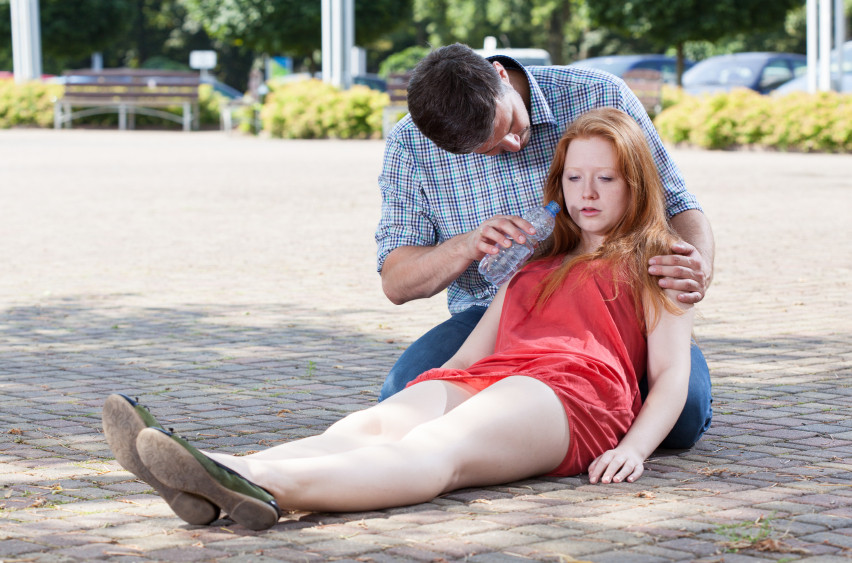What happens when you faint?

ARCHIVED CONTENT: As a service to our readers, Harvard Health Publishing provides access to our library of archived content. Please note the date each article was posted or last reviewed. No content on this site, regardless of date, should ever be used as a substitute for direct medical advice from your doctor or other qualified clinician.
Were you watching the news on CNN recently when anchor Poppy Harlow fainted during a live broadcast? She was talking about a graphic on the screen at the time when, over a period of 10 seconds or so, her speech became halting and slurred — and then there was silence. With the graphic regarding President Obama’s approval ratings still on display, the broadcast moved on to a commercial. After a CNN colleague filled in briefly, Ms. Harlow, who is pregnant, reappeared and reassured her audience that she was fine. She explained that she got a little warm, fainted briefly, and now felt fine. She finished up the show and promptly reported to her doctor. A short while later, she tweeted that she and her baby were fine.
The video of the show has been widely circulated. It’s not every day that you can watch (or hear) someone pass out on live television. But did you ever wonder just what fainting is?
Fainting is not just one thing
As the term is commonly used, fainting is a sudden and temporary loss of consciousness. The medical term is “syncope,” which comes from the Greek “synkope,” meaning “contraction” or “cutting off.” It’s an apt expression, because syncope occurs due to a sudden reduction in blood flow to the brain. Syncope is remarkably common: about one-third of people report having at least one episode of fainting during their lifetime. But while “fainting” is commonly used to describe otherwise healthy people passing out, it can be due to a number of conditions, ranging from the harmless to the life-threatening.
Some of the most common causes of fainting include:
- Vasovagal syncope. The name of the condition refers to increased activity of the vagal nerve which signals the heart to slow down and for blood vessels (“vaso-“) to open up. This combination of effects leads to a drop in blood pressure and too little blood flow to the brain. The sight of blood or emotional or physical stress are common triggers for this condition. Straining during a bowel movement or even vigorous coughing may also provoke vasovagal syncope. And so can a warm environment or a feeling of panic or claustrophobia.
- Abnormal heart rhythm. If the heart rate is markedly slow or fast, blood pressure may fall and fainting may follow. Among the many triggers for an abnormal heart rhythm are diseases of the heart itself, certain medications, or an overactive thyroid gland.
- Orthostatic hypotension. This term means a drop in blood pressure that develops when going from lying down or sitting to standing up. Dehydration, medications or drugs (including alcohol), and heavy blood loss are common underlying culprits. The condition also becomes more common with age.
There are many other causes of fainting, such as low blood sugar or seizures. But in many cases, no cause can be found.
Although about 75% of people who faint have nothing serious as the cause, it’s important to get checked out to make sure you’re in that 75%. And even when nothing serious is found, many people injure themselves if they fall when they lose consciousness. People who’ve fainted and who have occupations that involve transporting passengers or the operation of heavy machinery may be advised to restrict activities that could put themselves or others at risk if they faint again.
Pregnancy is another situation that may make fainting more likely. The blood vessels tend to dilate during pregnancy and blood pressure is normally on the low side. It doesn’t take much to lower the blood pressure enough to cause fainting.
When fainting is fashionable
In some circumstances, fainting at a specific cue — “swooning” or “falling out” — became a cultural expectation. For example, it was common for aristocratic women in Victorian England to faint during a particularly dramatic moment. Examples abound of “hysterical fainting,” where large numbers of people near one another begin to faint due to an assumption of shared disease or exposure to a toxin, or even a curse. And then there’s the game we used to play in the neighborhood to intentionally faint: we’d breathe deeply and quickly for a while and then hold our breath and bear down. It never worked for me — that’s fortunate, since it can be dangerous.
The bottom line
The circumstances of Poppy Harlow’s fainting episode – a warm environment under the studio lights, pregnancy and a stressful job – would seem more than enough to trigger an episode of fainting. But she did the right thing in getting checked out by her doctor. In fact, perhaps the only surprising thing about fainting – including Poppy Harlow’s recent on-air event – is that it doesn’t occur more often.
About the Author

Robert H. Shmerling, MD, Senior Faculty Editor, Harvard Health Publishing; Editorial Advisory Board Member, Harvard Health Publishing
Disclaimer:
As a service to our readers, Harvard Health Publishing provides access to our library of archived content. Please note the date of last review or update on all articles.
No content on this site, regardless of date, should ever be used as a substitute for direct medical advice from your doctor or other qualified clinician.















